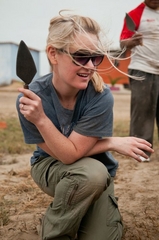What the Bones Tell Us…
Check out this recently-published article by GSU Anthropology Professor Bethany Turner reporting her archaeological research on mid-15th/early-16th century Peruvian sacrificial victims:

Turner, B. L., Klaus, H. D., Livengood, S. V., Brown, L. E., Saldaña, F., & Wester, C. (2013). The variable roads to sacrifice: Isotopic investigations of human remains from Chotuna-Huaca de los Sacrificios, Lambayeque, Peru. American Journal Of Physical Anthropology, 151(1), 22-37.
“This study investigates two key variables-residential context and subsistence-among sacrificial victims dating to the Late Horizon (A.D. 1450-1532) in the Huaca de los Sacrificios at the Chotuna-Chornancap Archaeological Complex in north coastal Peru. We investigate whether aspects of sacrifice in this distant coastal province mirrored that found in Inca heartland contexts such as the capacocha, or remained more typical of coastal sacrificial traditions. Stable carbon, nitrogen, and oxygen isotope values were characterized in bone carbonate, bone collagen, and hair keratin to estimate geographic residence during the decade before death and diet in the decade, versus months, before death. … In contrast to contemporaneous coastal and highland contexts, we are unable to identify immigrants among the sacrificed individuals or changes in diet that indicate provisioning with a standardized diet leading up to death. Instead, results suggest that victims were local to the area, but consumed moderately variable diets consistent with local subsistence patterns. These findings suggest a distinct pattern of human sacrifice in the Late Horizon and underscore the regional and temporal variation in sacrificial practices in the central Andes.” [from Abstract]